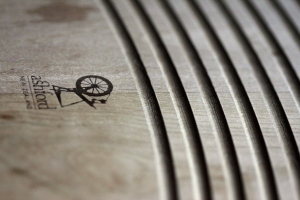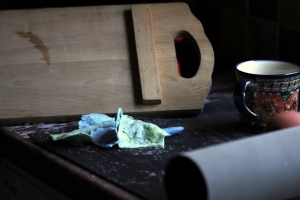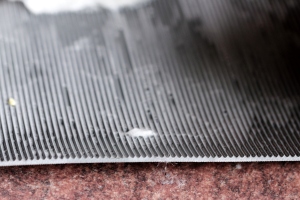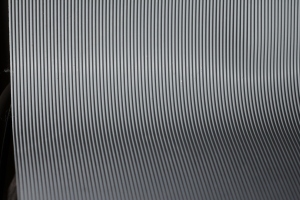In Ireland, and LImerick in particular I have been unable to purchase a wash board second hand, neither in the antique shop or online. So I have got an Ashford wash board.

note that grooves are well finished and do not disturb the fibers at early stages
 The board consists of two wooden panels joined seamlessly in the middle. The ridges are not too deep, and are shaped so the water is drained during the process. The size of the grooves is approx:6 millimeters, the size of the board: (46 by 23 cm).
The board consists of two wooden panels joined seamlessly in the middle. The ridges are not too deep, and are shaped so the water is drained during the process. The size of the grooves is approx:6 millimeters, the size of the board: (46 by 23 cm).What I consider as a plus in terms of Ashford:
- well finished (sanded) grooves
- the quality of wood, while it soaks up the water, the water itself does does not affect the structure of the board
- the wood seems to be pre treated with something so there is no need for oiling it
- at the back of the panel there is a narrow wooden board which acts as a hinge. So it blocks the board from moving.
Negative: the price, at 35 pounds it is rather dear, however when buying standard wash board one might purchase something that does not fit the purpose so well (for instance the rigdes are risen in some boards which does not allow to evenly full the larger pieces). I suppose glass ridges and grooves might be little bitt too slippery as well (btw. has anybody got any experiences with regards to use of old wash boards in feltmaking?).
 I have also purchased a plastic mat for the same purpose. It is used for rolling scarf bundles (at early and later fulling stages). The grooves are rather small: (1-2 millimeters). The overall size is 50 by 80 cm. On this one I prefer to make my felted dreads and I tend to use it for rolling scarf bundles.
I have also purchased a plastic mat for the same purpose. It is used for rolling scarf bundles (at early and later fulling stages). The grooves are rather small: (1-2 millimeters). The overall size is 50 by 80 cm. On this one I prefer to make my felted dreads and I tend to use it for rolling scarf bundles. In the case of flower or slippers - I prefer ashford. I suppose the serrated rubber mat is less likely to disturb surface of felt when it is rubbed.
In the case of flower or slippers - I prefer ashford. I suppose the serrated rubber mat is less likely to disturb surface of felt when it is rubbed.
What is interesting here is that sanding on this surface results in permanent transfer of the shape of the grooves onto a felted piece.
Have you got any favorite fulling tools yourselves?
No comments:
Post a Comment